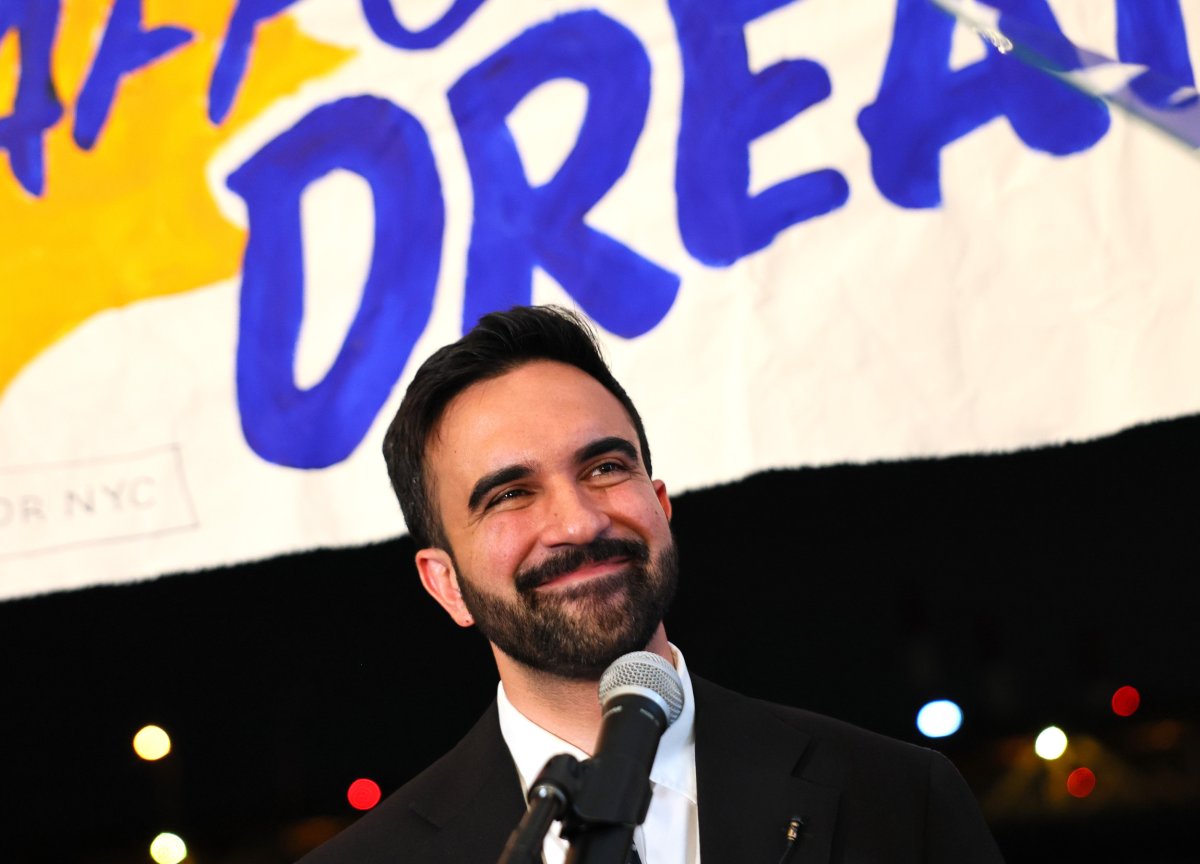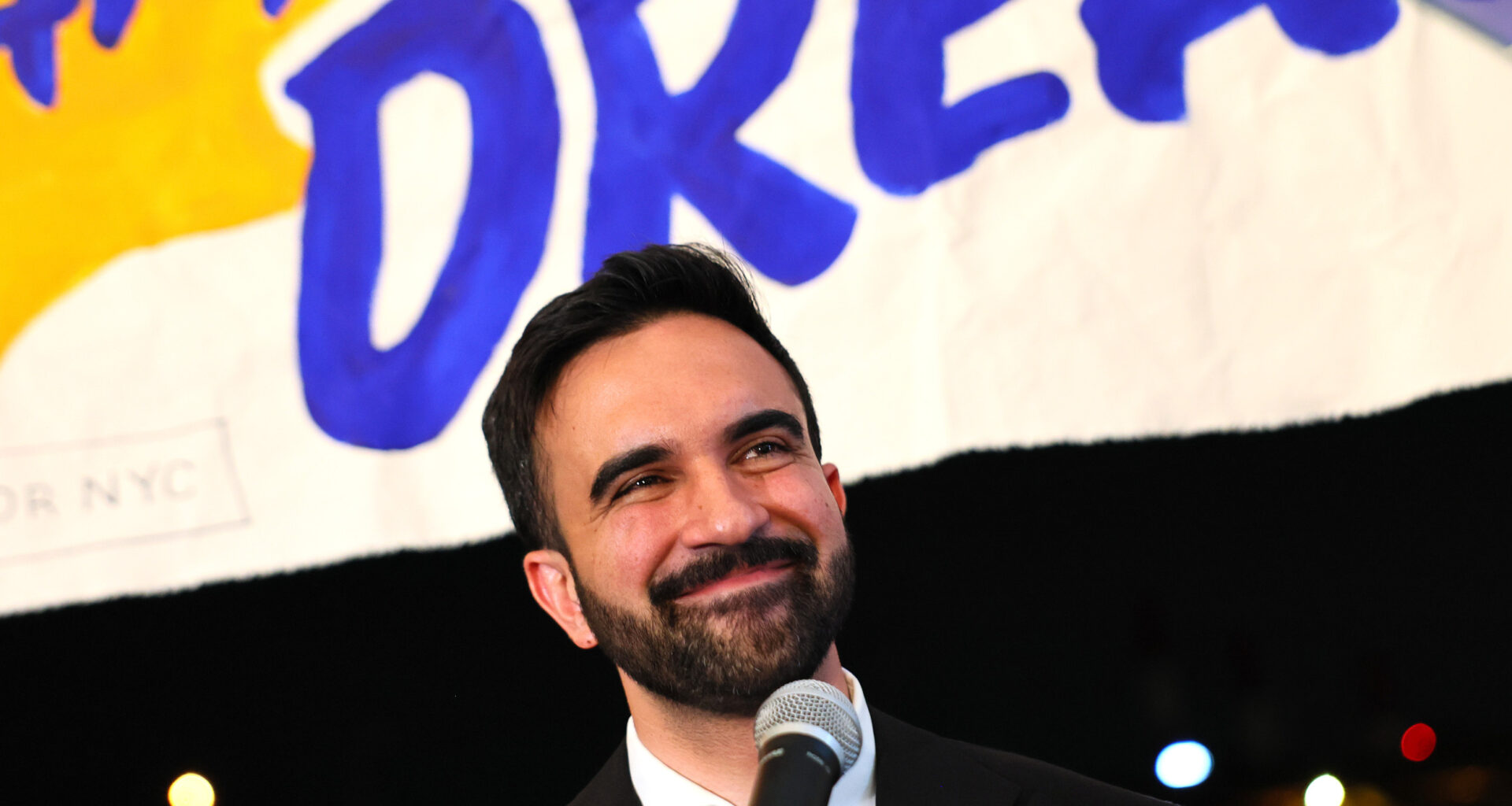Zohran Mamdani’s election as the Democratic nominee for mayor in New York City reflects some interesting things not just about New York, but American elections.
The first lesson is party labels mean almost nothing anymore. As Mamdani proves, you don’t even have to be a Democrat to win the Democratic nomination. He’s a self-proclaimed “Democratic socialist.” He could have even won without being eligible to vote for himself!
To get on the ballot in a “closed ballot” state like New York, you need to circulate petitions, but only party members can sign the petition. So in theory, a raging Republican could win the Democratic nomination if he got Democrats to sign his “Democratic” petition and then vote for him.

New York mayoral candidate, State Representative Zohran Mamdani, speaks to supporters during an election night gathering at The Greats of Craft LIC on June 24, 2025, in the Long Island City neighborhood of the Queens…
New York mayoral candidate, State Representative Zohran Mamdani, speaks to supporters during an election night gathering at The Greats of Craft LIC on June 24, 2025, in the Long Island City neighborhood of the Queens borough in New York City.
More
Michael M. Santiago/Getty Images
The second lesson is a small minority of voters pick not just our candidates, but our winners. New York City—and increasingly all big cities—reflect this trend.
More than 8 million people live in NYC. That translates to about 6 million eligible voters (citizens over age 17). Of those, about 5 million are actually registered to vote, which is an impressively high number of eligible voters (85 percent). Of those 5 million, about 3.3 million (65 percent) are registered Democrats. The rest are registered independents (21 percent), Republicans (11 percent), and other (3 percent).
But only 1 million registered Democrats in NYC—meaning less than one-third of registered Democrats—actually voted in their primary. More than two out of three registered Democrats skipped the election. For those that voted, the winner—Mamdani—received just 432,000 votes (43 percent of the total).
Translated: just 5 percent of all New Yorkers—and less than 10 percent of registered voters—effectively picked the mayor for the city, an avowed Democratic socialist. That’s American politics today.
To be sure, the primary system has always favored more “extreme” candidates because primaries bring out “extreme” voters, as they are generally more motivated to show up and vote in primaries than the “average” voter. But it’s getting worse and increasingly fractured. It results in our elected leaders increasingly not reflecting the general electorate’s positions, with the moderate masses left with no representation.
My home city—Chicago—is a little different. In 2023, Brandon Johnson won the mayoral election when only one-third of registered voters bothered to vote. In the original primary, before the runoff, he received just 122,000 votes, meaning less than 10 percent of eligible votes, and less than 5 percent of Chicagoans actually voted for him. Yet today he ostensibly represents all of Chicago.
The third lesson is that the Democratic Party has obviously become very left-leaning. Not long ago, no candidate would self-define as a “Democratic socialist.” Doing so was a de facto political death sentence. Calling oneself a socialist ran afoul of America’s holy political trilogy: capitalism, liberty, and God.
Sure, there were outliers and anomalies like Senator Bernie Sanders. But they were akin to Berkeley and Cambridge, meaning not taken too seriously outside their progressive bubbles.
Today, however, the “outliers” are actually “old school” Democrats like Andrew Cuomo, Hillary Clinton, and Rahm Emanual. The “progressives”—Democratic socialists—are the new Democratic Party, apparently reflecting its majority positions. And for these new Democrats, Mamdani didn’t win in spite of his anti-Israel positions, but perhaps because of them, meaning it’s increasingly a plus issue for Democratic voters.
The final lesson is that in the “old days,” candidates had to bend to the party. But today, it’s the other way around: the party bends to the candidate.
This not a Democrat or Republican phenomenon, but rather an American one. President Donald Trump has bent the Republican Party to effectively be the Donald Trump party (MAGA). And the same now goes for Sanders, AOC, and Mamdani as they transform the Democratic Party into the Democratic Socialist Party.
How to fix this? The answer is equal parts simple yet complex: if the moderate masses ever seek to reclaim their own parties, they need to field candidates and then actually show up—in the primaries—and vote for them. Otherwise, welcome to the People’s Republic of New York City.
William Choslovsky, born and first raised in Gary, Ind., is a Harvard Law School graduate and now a lawyer in Chicago.
The views expressed in this article are the writer’s own.
